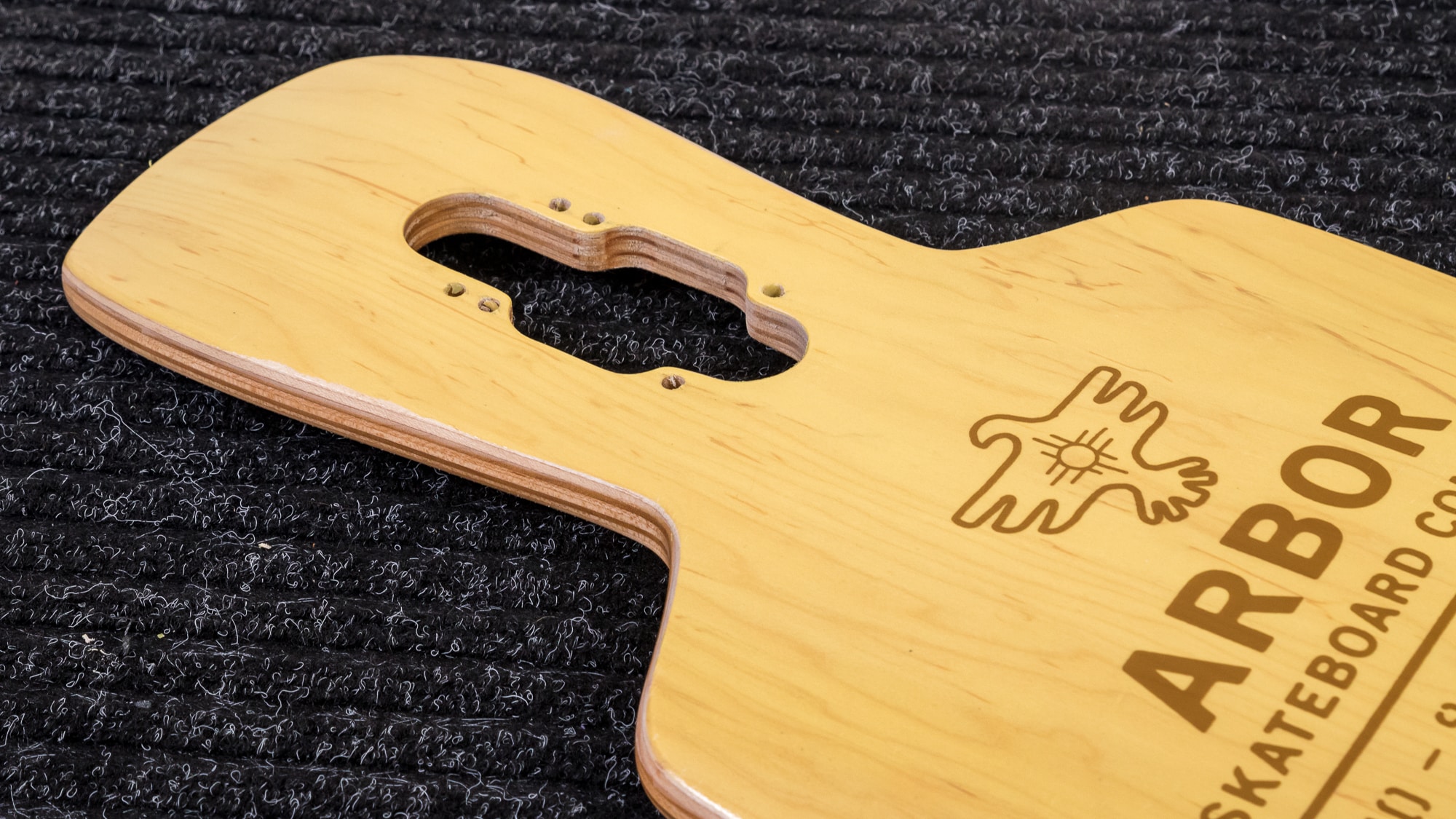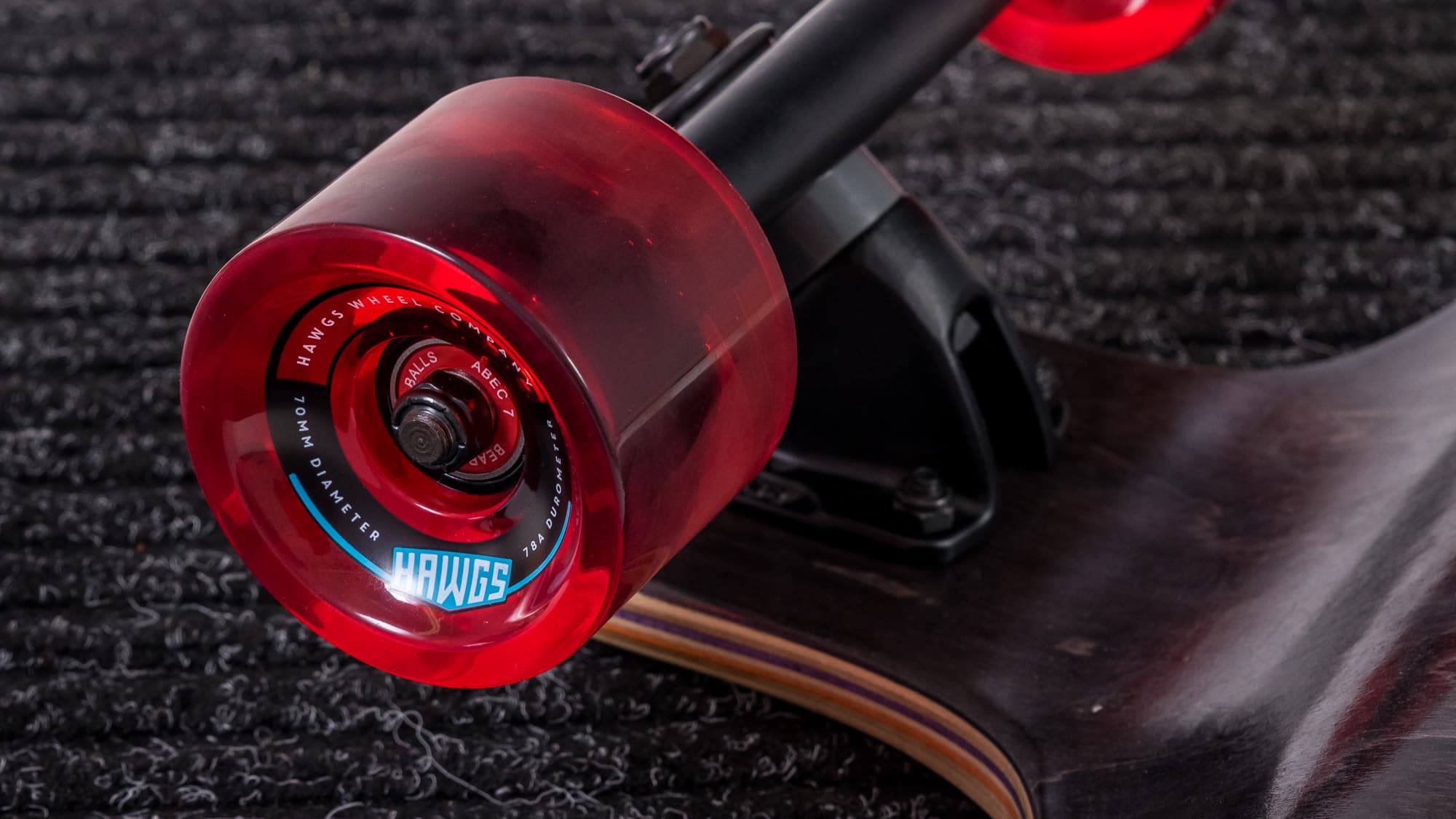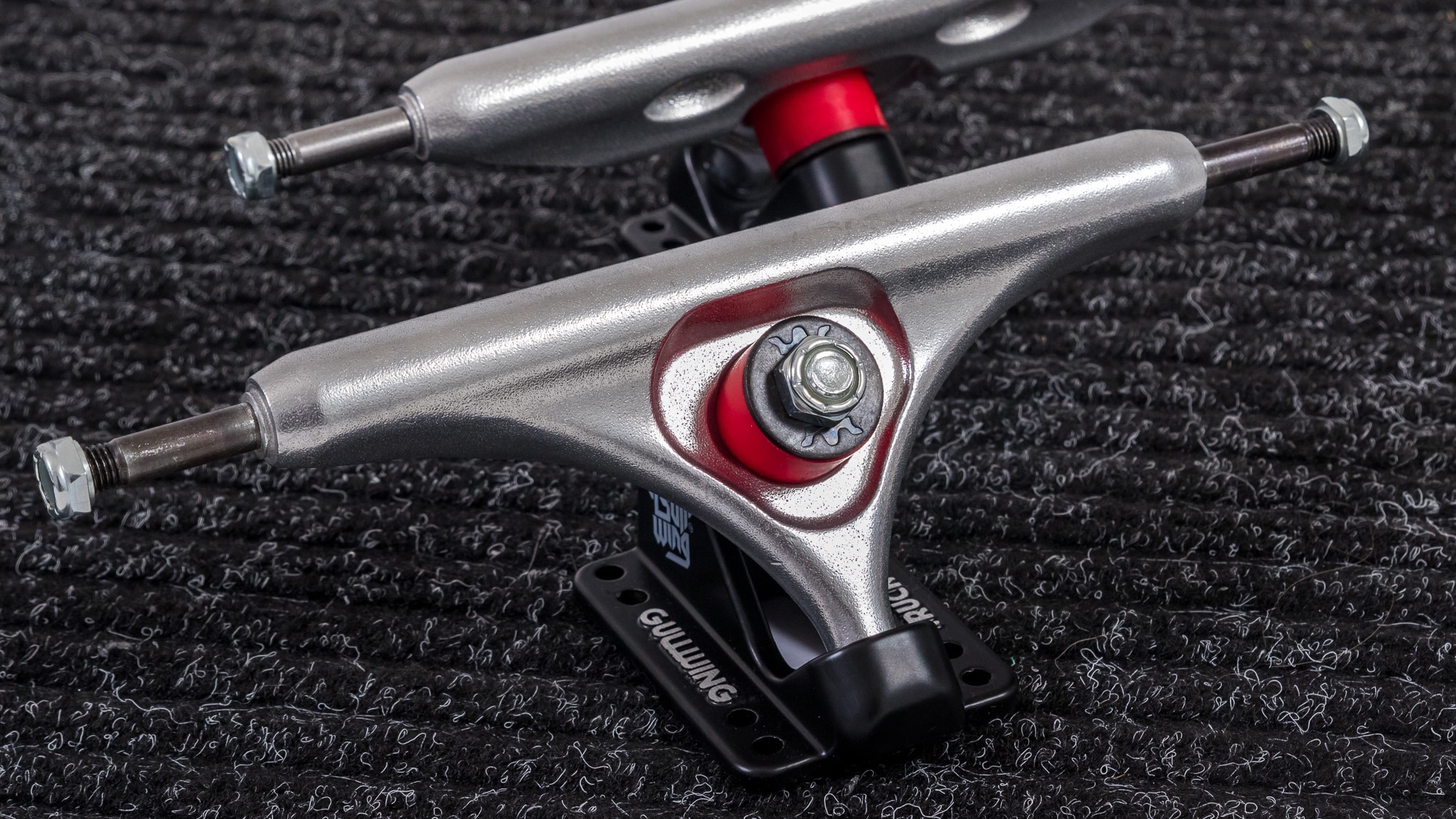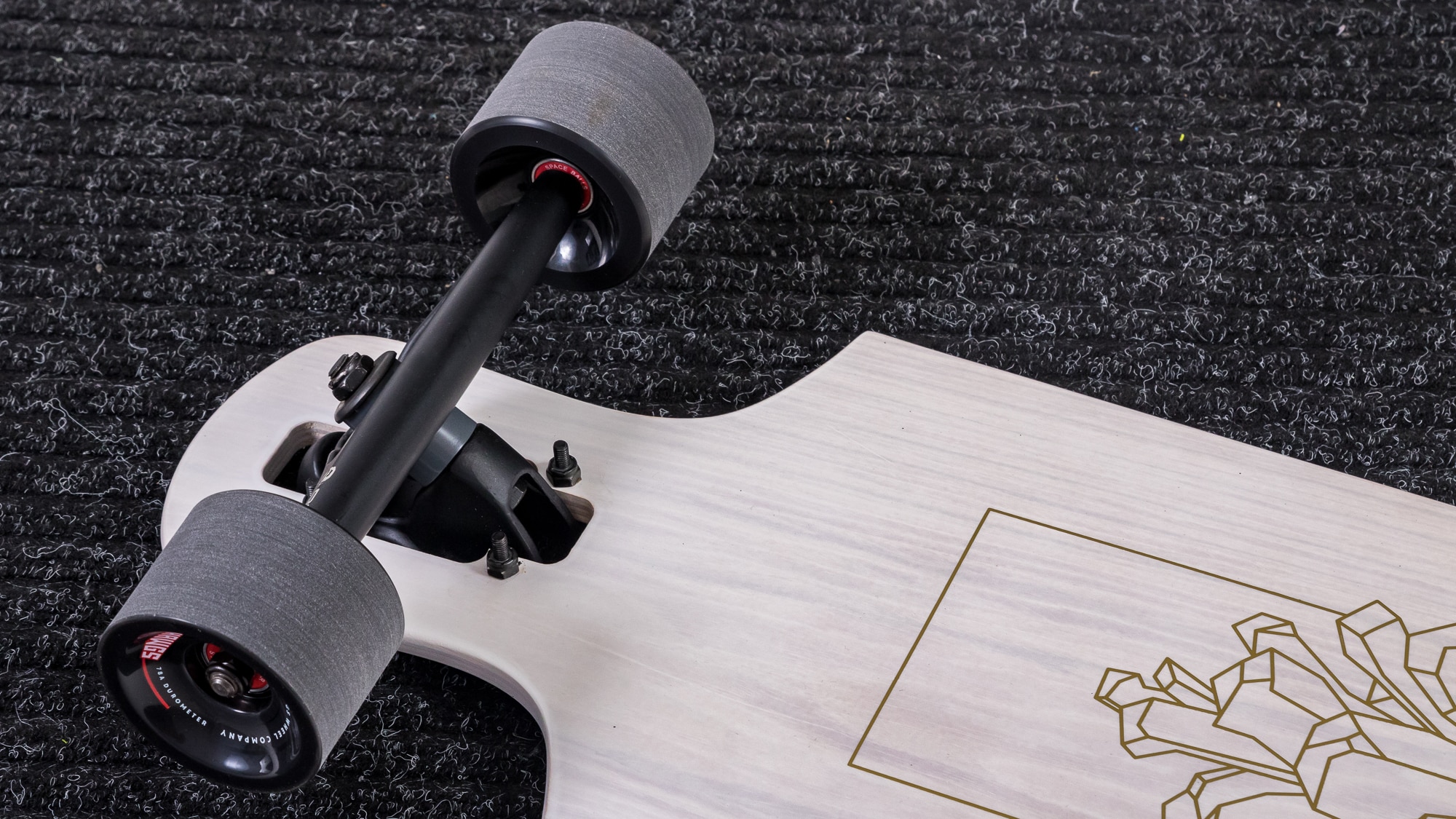Choosing Longboard Bushings
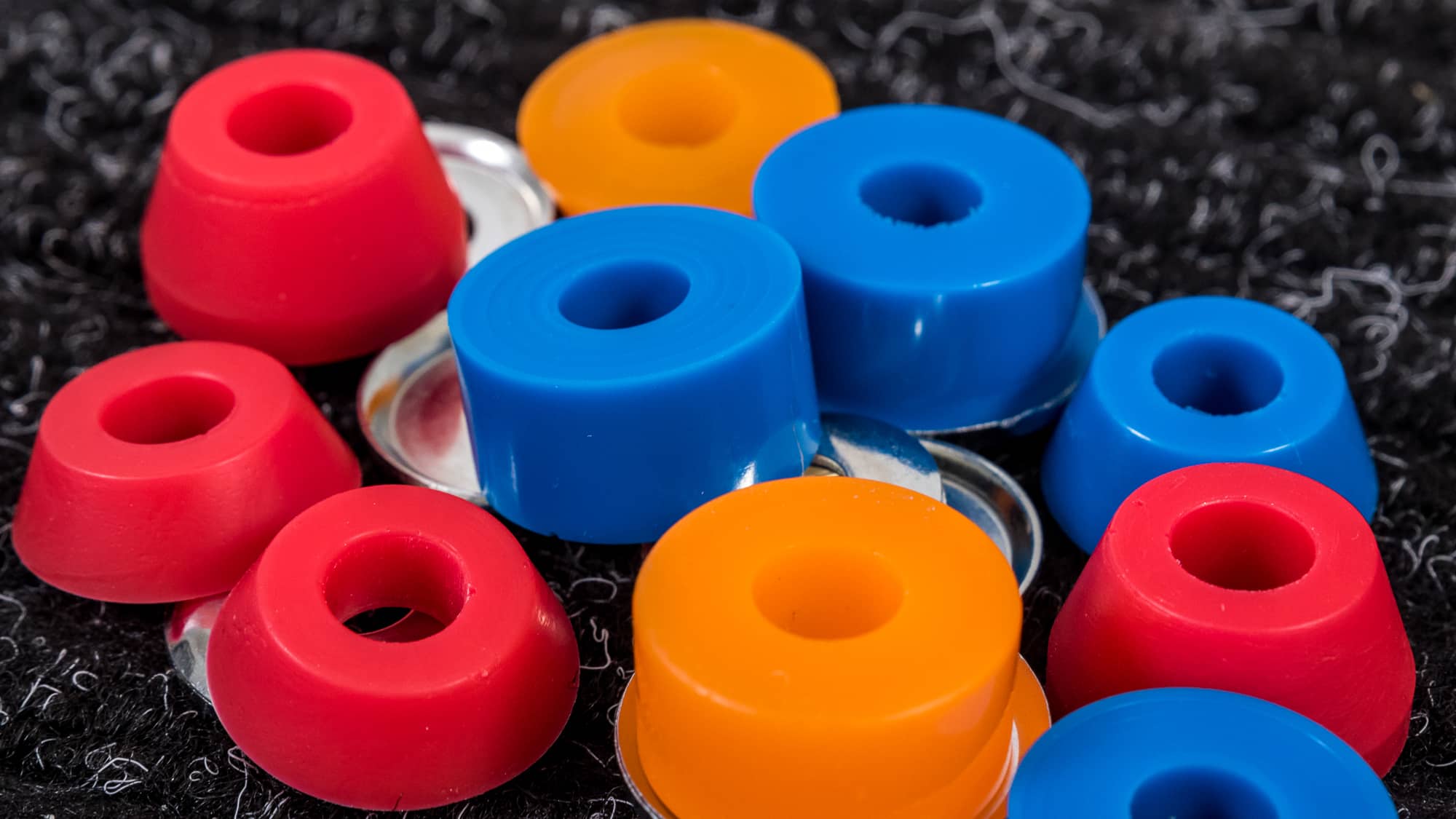
Bushings are often the most overlooked and least understood components of a longboard setup, but dialing in your bushing setup can be the difference between loving or hating your ride. Stock bushings are selected with a “one size fits all” mentality but no one has the same ride style and body weight, so it is strongly recommended that you play around with different bushing shapes, and durometers to customize the way your trucks ride.
The kingpin nut can be used to make fine adjustments to the tightness of your trucks, but major adjustments should be made by swapping out your bushings. This guide will help you understand the differences between the types of bushings so you can find the setup that feels best for your weight and ride style.
WHAT ARE LONGBOARD BUSHINGS?
Bushings are the urethane support cushions that are mounted on the kingpin and fit into the bushing seat on both sides of the hanger. They give adjustable levels of resistance when turning and prevent the metal components of the truck from grinding on each other. Each truck should have two, and you can customize the way your trucks feel by adjusting the size, shape, and durometer of your bushings.
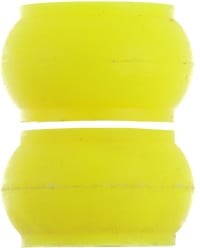
WHAT LONGBOARD BUSHING HARDNESS SHOULD I GET?
Just like longboard and skateboard wheels, bushings have durometer ratings that asses their hardness. Most bushings range from very soft 78a to very hard 98a. 78-83a bushings are considered to be soft, 84-90a bushings fall in the medium range, and 91-98a bushings are considered to be hard. In general, a softer bushing will be more responsive but less stable, while a harder bushing will be more stable but less responsive. Bushing durometer should first be selected by your weight range, so check out our guide below to get a better idea of the bushing durometer you should be riding:
The performance of your bushings is also affected by the speed you are riding at. The faster you go, the more responsive your bushings will feel. If you are riding at fast freeride and downhill speeds, you may want to get a slightly harder bushing durometer than the weight chart suggests or a more restrictive bushing shape. If you are using your setup for transportation or carving, you may want to choose a slightly softer durometer than the weight chart suggests or a less restrictive bushing shape for a more playful and responsive feel.
Split durometer bushing setups are often used for further customization. Try using a harder boardside bushing for a stable, supportive base and a slightly softer roadside bushing for a divey, responsive feel.
LONGBOARD BUSHING DUROMETER CHART
| Rider Weight | Bushing Durometer |
|---|---|
| <100 lbs | 78-80A |
| 100-125 lbs | 80-82A |
| 125-145 lbs | 82-87a |
| 145-175 lbs | 85-90a |
| 175-195 lbs | 87-93a |
| 195-220 lbs | 90-93a |
| >220 lbs | 93-98A |
BUSHING SHAPE
Bushings come in a wide variety of shapes, but the most common are short cone, tall cone, barrel, eliminator or stepped barrel, and stepped or freeride cone. Each shape offers different turn characteristics and can be mixed and matched to achieve unique ride styles. If you are using bushings with two different shapes or durometers in one truck, it is recommended that you place the harder or more restrictively shaped bushing on the boardside.
SHORT & TALL CONE
Short and tall cone bushings give the hanger a wide range of motion for a divey, easy carving feel. They are great for transportation and carving because they make your board very lively and responsive at slow speeds but are less stable at high speeds. Because of its size, a tall cone will be slightly more restrictive and stable than a short cone and is most often used in reverse kingpin trucks (RKP). Short cones are most often used as the roadside bushing in standard kingpin trucks (SKT).
BARREL
Barrel bushings are designed to fill the entire bushing seat to give the rider increased stability for more aggressive freeride and downhill riding. However, softer barrels can also be great for carving and transportation. Barrels are often paired with a tall cone to give riders a great all around stable and responsive setup for any type of riding. If you like barrel-cone setups but want a little more support for higher speed riding, try a double barrel setup with a softer durometer roadside bushing.
ELIMINATOR
Eliminator or stepped barrel bushings are designed to be very restrictive in order to prevent wheelbite in SKP trucks or provide ultimate stability in downhill RKP trucks. They fill the entire bushing seat and have an additional bevel that steps out around the outside of the bushing seat for increased support and control. Because of their restrictive shape, they allow you to ride a softer durometer than you may be accustomed to. This gives you the advantage of having both a large supportive shape and soft responsive urethane. They are usually only used as a boardside bushing and are commonly paired with barrel bushings.
STEPPED CONE
Stepped or freeride cone bushings are a mix between cone and eliminator shaped bushings to give you the best of both worlds. One end offers a very supportive base which locks in and around the bushing seat for increased stability while the other end tapers to allow a wider range of motion from the hanger. This innovative shape provides similar performance to split shape and durometer setups that can be used on either or both sides of the hanger. Depending on the durometer you choose, this shape can be great for any type of riding.
SWAPPING THE BUSHINGS
In order to change your bushings, you will have to disassemble and reassemble your trucks.
First, loosen and remove your kingpin nut, then remove your top bushing washer, roadside bushing, hanger, and boardside bushing from the kingpin. You may need to wiggle your hanger side to side to help pull the top bushing out of the bushing seat and remove the hanger's pivot from the pivot cup.
Next, select your new bushings, and reassemble. The order of items from the base of the kingpin should be be baseplate, washer, boardside bushing, hanger, roadside bushing, washer, and finally the kingpin nut to hold it all together. The best strategy for reattaching the hanger is to first place the hanger's pivot into the pivot cup then lower the hanger into place. When reassembling your trucks, make sure that your bushings fit snugly into the bushing seat.
Finally, tighten your kingpin nut only until there is no vertical movement from your hanger. Tightening too much will minimize the performance of your bushings, and leaving your kingpin nut too loose will give you a sloppy and unstable feel to your turns. The kingpin nut can be used to make fine adjustments to the tightness of your trucks, but major adjustments should be made by changing the bushing's shape or durometer.
Hop on your board on flat ground to test it out, make adjustments if necessary, then go out and ride! We recommend that you always start slow on a new bushing setup until you get used to the way it feels under your feet.
Keep Learning
Still Have Questions?
We’re here to help. You can call, email, chat or IM during business hours seven days a week. Our customer service staff skates…a lot. They know their stuff and are happy to help you with all things skate.
